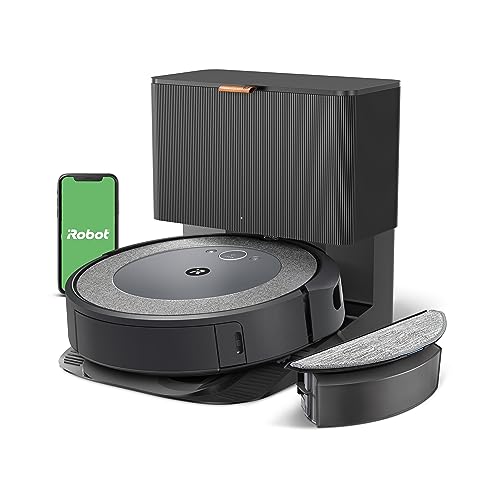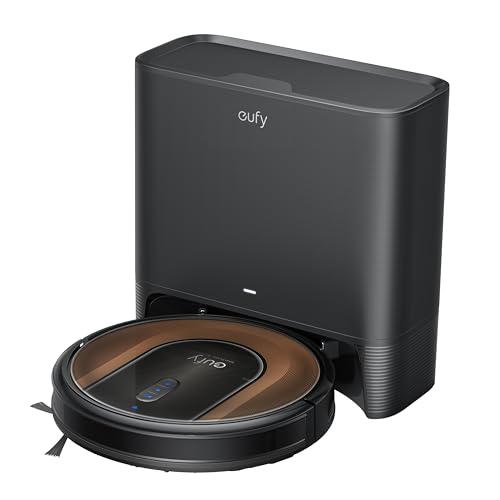How To Create An Awesome Instagram Video About Self-Empty Robot Vacuum
페이지 정보
Trena 작성일24-08-07 02:26본문
 Benefits of a Self-Empting Robot Vacuum
Benefits of a Self-Empting Robot VacuumA majority of the top robotic vacuums have self-emptying bases. These can last for months without needing to be emptied. They are particularly useful for pet owners or small children, and for those who have trouble keeping their floors clean.
The self-emptying feature is able to transfer debris from the robot's dustbin to the base, removing the need for regular emptying. This is a great feature that makes the robot more user-friendly.
It's more convenient
One of the most significant advantages of a self-emptying robotic vacuum is that it's less likely to bring the debris back into your home after the cleaning cycle. This is especially beneficial if you have individuals in your household who suffer from allergies or respiratory ailments because the dust would be stored in the base rather than being released into the air.
Many robots come with an integrated dust bin which you'll need to empty after every cleaning cycle however, self-emptying models take this responsibility off your hands. Instead of having to reach inside the bin and get your hands on the dirt, you'll need to open a door in the dock station to release it into a larger storage bin--similar to what you'd find on a traditional upright vacuum cleaner.
Depending on the model that you choose, the storage container will have to be empty every 45 to 60 days. And since you'll need to remove the robot from its dock to empty it and you'll be able run it more often without having to worry about your hands getting covered in dirt.
The majority of self-emptying models remove the need for manual handling of the dustbin's contents. You'll be able see when the bin is full and know it's time to empty it without a need to guess.
Look for models that offer apps integration if you wish to make the most of your robot. This lets you schedule cleaning sessions and set no-go zones, among other things. In certain instances the app allows you to modify settings like mopping power or suction power.
Other convenience-enhancing features that are worth considering include obstacle avoidance and object recognition. These features allow the vacuum to move around moving objects (like pet toys or charging cables) and ensure that the room is cleaned. Leading brands such as Roborock have been claiming that their latest models are able to recognize and navigate various obstacles. It's particularly useful for pets and children who are susceptible to slipping on toys or cables that are tangled.
It's not as icky.
Like many traditional vacuums robotics also use small dust bins to collect debris when they work. Depending on the frequency of use and how dirty your floor is, you could be able to empty this bin after two or three cleaning cycles. Some models have features that allow the vacuum to move its dirt into a larger storage bag that is located inside the docking station, eliminating the requirement to empty the bin manually each time you clean.
It's important trry about dust getting back into your home. This is a huge plus for people with allergies, since it helps to control dust that builds up within your home.
Although you can find robot vacuums that don't have an auto-emptying dock, we've found that they are slightly more difficult to use because they require you to empty the container after each cleaning session. This is particularly the case if you reside in a bigger house and it's difficult to use the robotic vacuum without an automatic emptying dock when Revolutionize Your Cleaning with iRobot Roomba Combo J5+ cleaning schedule requires multiple trips per day.
The CHOICE small appliance team has tested a number self-emptying vacuums and discovered that they are more efficient and effective. Many of these models also include a variety of handy features, like a mobile app that lets you see how clean your home is in real time; the ability to create 'no-go' zones and alter the suction power as well as an error alert system that will send you a message when your robot vacuum with self empty is having trouble or is getting low on power.
Some models, such as the Shark AI Robot Self-Empty feature an exclusive HEPA base with a capacity of 60 days that traps dirt and allergies. This is a great choice for families with children or pets as it will keep the air inside your home more hygienic than it normally be.
Some of the models we tried also come with a mopping function that is helpful to keep your floors in top condition. These robots utilize microfibre pads, which are hydrated by a water tank that is located at the bottom of the robot. Some robots can even avoid obstacles like tangled lamp cables and pet waste.
It's more expensive
The self-emptying feature on robot vacuums can increase the total cost of the device. However, the additional cost is well worth it if you don't want to keep emptying the bin of your robot vacuum after each use. It also stops issues like overfilling the bin and clogs, which can impact the functionality of the vacuum over time. In addition to making your life easier, it also extends the life span of the device, ensuring it works effectively for the duration of time you own it.
Self-emptying robots usually come with a docking station large enough to acts as both a larger trashcan and charging station for the machine. They can hold months or even weeks of debris without needing to be emptied. This provides you with peace of mind and frees your time to concentrate on other important tasks during the week or on a day.
These stations are simpler to use than bins onboard which aren't always easy to open. They have an opening with a handle or pull tab to make it simple to empty the waste. Depending on the frequency you use your robot and the size of your house, the base may need to be emptied as often as twice every cleaning cycle. These bases are also able to be used as charging stations and are a great way to maximize the value of your robot vacuum.
It's important to remember that self-emptying models will need some upkeep, such as emptying their bins in the onboard storage and wiping their sensors. It's less frequent than maintenance for non-self-emptying robots.
If you are considering a self-emptying robot vacuum, bear in mind that they tend to be larger and take up more space than traditional robot vacuum docks. This can be a problem if you want to hide your robot vacuum in a corner of the room. However, it seems that manufacturers are paying more attention to design these days as we saw in the most recent Roomba J7+ and Roborock Q5. Both have sleeker canister designs than previous models with a modern matte ribbed finish as well as a the leather pull tab to open the lid.

댓글목록
등록된 댓글이 없습니다.

















